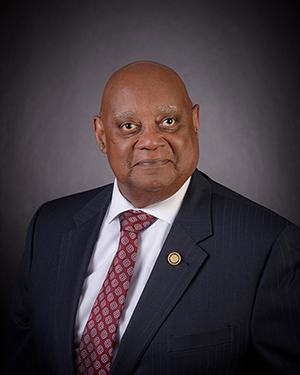Faculty spotlight on professor William Bundy: From sailor to submarine captain to associate provost for technology integration


Bundy joined the Navy as a high school kid in Baltimore in 1963, inspired by his aunt’s service in the WAVES, Women Accepted for Volunteer Emergency Service.
A sonar technician, he served on various assignments until someone suggested he might like the challenge of a submarine. He did.
“It was pretty exciting. I enjoyed it, and when the commanding officer comes up and says, ‘Hey, you kind of fit, you ought to be here,” I followed that approach,” Bundy said, remembering the moment.
After making chief petty officer in eight years, Bundy got a shot at becoming an officer, earning his commission in 1975.
His timing was good, in terms of submarines and the Navy.
“At that time, the submarine force was looking for more officers. We were going to go into the missile age in submarines, for our attack submarines, and they were looking for officers to go into that business,” Bundy said.
Also, then-Chief of Naval Operations Elmo Zumwalt had his sights on addressing racial discrimination in the Navy. Zumwalt’s now-famous 1970 “Z-gram” declared that “there is no Black navy, no white navy – just one navy.”
Bundy said, “This was a great opportunity for me.”
The officer’s path took him to fast-attack and ballistic-missile submarine posts, culminating in command of the USS Barbel, one of the Navy’s last diesel fast-attack subs.
As an African-American submarine captain, he was in select company known as the Centennial Seven.
Only seven African-American officers were given command of a submarine in the first 100 hundred years of the U.S. submarine force. Bundy was the third, and the first to rise from the enlisted ranks.
About the group, Bundy said, “There are a lot of firsts for African Americans in the Navy. … Over time, African Americans achieved success in the Navy, just like everybody else. It wasn’t a matter of getting an opportunity because of ‘equal opportunity,’ it was getting an opportunity to perform just like everybody else.”
Along the way, as a submariner, Bundy became steeped in technology, particularly in computer systems, weapons, electronic navigation and ship propulsion engineering. Later, his doctoral research looked at leadership and governance in technology-driven organizations.
After retiring from the Navy, a series of public-service posts led Bundy to the Rhode Island Department of Transportation, where he was director from 1994 to 1996.
Ironically, despite a lifetime of serious technical jobs, his most public legacy may be low-tech: As transportation director, Bundy got legislation passed that allows the popular red, white and blue street striping for Bristol’s big Fourth of July celebration to stay year-round.
It was a proud moment when, in 2008, Bristol asked him to deliver the marquee speech at that celebration.
“That was a pretty big honor here in Rhode Island to be the patriotic speaker,” Bundy said. “I spoke on a ‘principled United States’ and the idea that we have a need for common justice.”
After a stint in the private sector -- working on technology planning at FleetBoston Financial – in 2003, Bundy returned to the Naval War College, where he had previously served.
Currently, he leads the Vice Adm. Samuel L. Gravely Jr. Naval Warfare Research Group, which has developed concepts of operations for systems such as ballistic-missile defense and Ohio-class guided-missile submarines and the strategy known as distributed lethality.
In his new role, he will continue that concept development writ large. Bundy said he plans to bring together leaders from around the college to create technology-based operational concepts, experiment in war games, conduct exercises and gather academic research on high-end warfare.
Part of his new role is to collaborate with the director of warfighting development, an office being created by the chief of naval operations as OPNAV N7.
“We are in a major-power competition,” Bundy said.
“The technology we are seeing today will provide new ways for us to operate the Navy and the joint force, everything from how we manage people to weapons and sensors and capabilities in terms of ships, submarines and aircraft,” he said.
“At the same time, we have to be very cautious because there are unintended consequences with technology. We have to have our moral and ethical vectors addressed as we bring these technologies onboard.”
